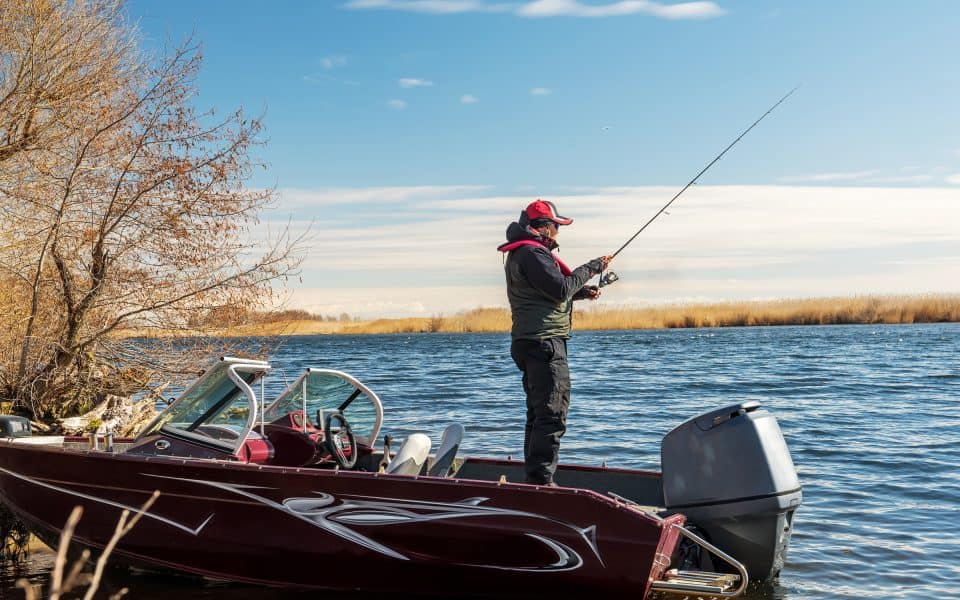Crappies can be caught on a variety of tackle, including light spinning gear, bamboo and fiberglass cane poles, even fly rods. Special extra-long crappie rods are also very effective, especially for trolling with multiple lines. Here are four proven spring crappie tactics. All of these have worked well for me over a lifetime of pursuing this terrific, tasty gamefish.
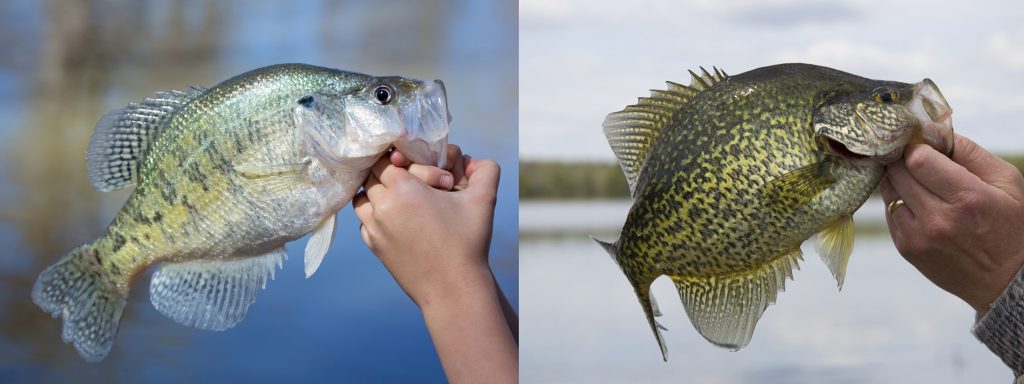
Maxwell Oehlenschlager
Drift or Slow-Troll for Pre-Spawn Crappie
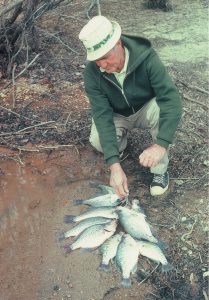 When winter loosens its grip and water temperatures rise into the upper 40s and low 50s, crappies stir from the depths and begin a slow movement towards the shoreline. They typically will begin spawning when the water temperature reaches 58° F. This isn’t a quick, sudden shift into the shallows. Instead, the transition process takes several weeks.
When winter loosens its grip and water temperatures rise into the upper 40s and low 50s, crappies stir from the depths and begin a slow movement towards the shoreline. They typically will begin spawning when the water temperature reaches 58° F. This isn’t a quick, sudden shift into the shallows. Instead, the transition process takes several weeks.
Some of the year’s best fishing comes in March through May (depending on your region south to north) for these crappies that are gradually becoming more active as the water warms. The first steps are tentative, easing into slightly shallower water than they inhabited during winter, typically five to twenty foot depths.
Drift fishing is one way to go at this time since it allows you to cover lots of water and pinpoint roving schools. If the wind is calm, troll very slowly with an electric motor.
Concentrate on points, the mouths of large feeder creeks, drop-offs, bridge pilings, and creek channel edges. A depth finder will help you locate these areas, and often pinpoint the crappies too.
Two different riggings work well. The first setup simply consists of a cylindrical bobber, a split shot or two and a small gauge hook, usually a size 2, 4, or 6. Lip-hook a minnow and drift over likely areas with floats adjusted to cover different levels from six to ten feet (or possibly a bit shallower or or deeper) by tying an adjustable bobber-stop on the line.
The second setup for drift fishing is the “tight-line rig.” This consists of a one to two ounce dipsey or bell sinker attached to the end of the line, and droppers 18 and 36 inches above that with minnows for bait. The sinker bounces on the bottom while the baits float up higher, hopefully in the strike zone. This rig lets you make sure your offering is just off the bottom as you feel the sinker knocking on the lake floor. That’s typically where many early-spring fish are holding, especially on days after a cold front.
Keep a marker buoy or GPS handy. If several fish strike in one area, toss it out or mark the spot and then re-drift or troll slowly through the spot.
Comb-Cast the Transition Crappie Zones
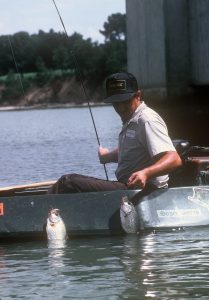 From mid-March to late April, depending on your location, fish move a bit closer to spawning areas but may not actually be on the beds, except for a few “scouts.” It all depends upon water temperature and recent weather. Comb-casting the transition areas is a great tactic now. A number of lures will catch these more active fish such as small crankbaits, spoons and spinnerbaits, but no artificial will top the humble jig.
From mid-March to late April, depending on your location, fish move a bit closer to spawning areas but may not actually be on the beds, except for a few “scouts.” It all depends upon water temperature and recent weather. Comb-casting the transition areas is a great tactic now. A number of lures will catch these more active fish such as small crankbaits, spoons and spinnerbaits, but no artificial will top the humble jig.
Crappies can be picky about which jig they prefer on any given day so it pays to stock a variety of these lures. Weights can range from 1/64 to 1/8 ounce, with 1/16 and 1/32 usually best. Chenille-bodied jigs with a marabou tail can be deadly. More often than not, however, soft plastic bodies adorn crappie jigs today. Try stubby bodies and short or stiff tails on cold days, fluttering twister-type tails when waters are warm and fish are more aggressive or if the water is cloudy. Also stock a few weedless versions such as the Charlie Brewer Slider design. Best colors are chartreuse, white, black, yellow, smoke, pumpkinseed and hot pink. However, don’t get locked into a color, let the fish tell you which they prefer as it can change daily.
Focus on water just off from the brushy, cover-rich areas where crappies will spawn, in eight to twelve foot depths. With this tactic you’ll be fan-casting to probe lots of water and locate fish. A light weight six to seven-foot spinning outfit with four to eight-pound line is the perfect rig. Vary your retrieve until you find what triggers the most bites. During spring, slow and steady seem to be the ticket.
Search the Shallows with Minnows
When the majority of crappies move in tight to cover and begin the spawning ritual, it’s time to pull out a fly rod, special “crappie rod,” or even an old-fashioned bamboo cane pole. The length of these fishing tools, 9-feet or longer, gives you “reach” to gently flip minnows back into pockets in brush and drop them next to logs and dock pilings where crappies spawn, without actually casting. That allows precision accuracy.
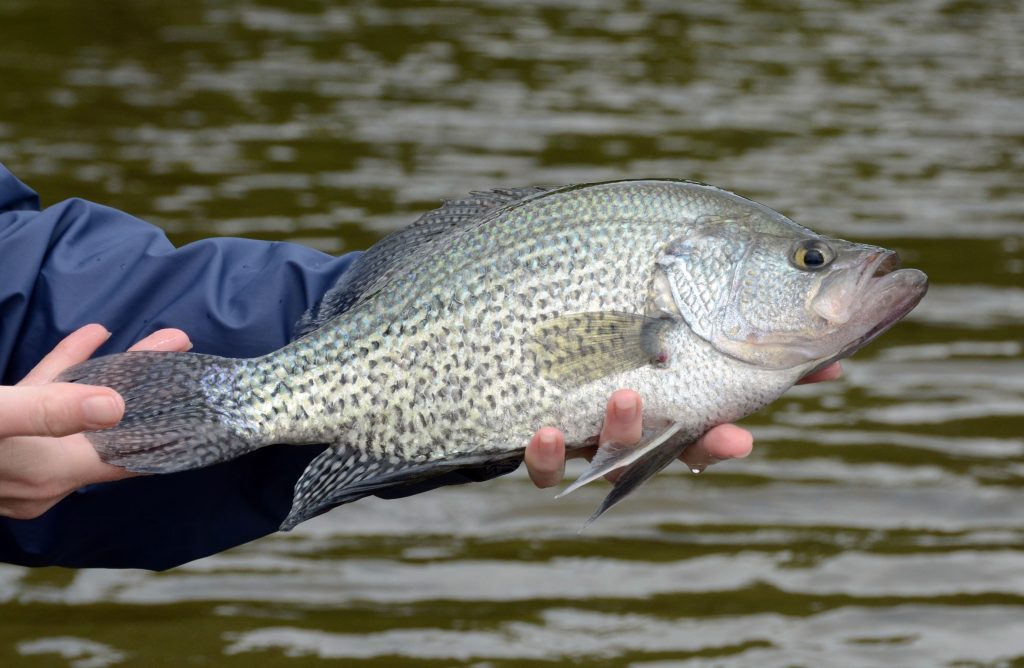
M Huston
Cover, especially woody structure such as brush piles, logs, flooded trees, dock pilings, and beaver huts are the places to target now. If wood cover is scarce, fish next to weed beds, bulrushes or bridge abutments in four to eight-feet of water. Special fish structures planted and marked by many state fishery divisions are great spots to try. Bridge pilings can also be good, especially the spans in shallow water.
This tactic for actively spawning fish involves moving from one piece of structure to the next, flipping minnows positioned about 18 to 36 inches below a float into openings you couldn’t deliver a cast to. Extend the rod, then drop the minnow straight down. When a fish strikes, wrestle the thrashing quarry quickly out of the cover.
Use a cylindrical float and a fine wire hook with a split shot or two a foot above the bait. Keep the line extended about three-fourths the length of the rod, the perfect length for flipping the offering into openings. If a fish is there, you should know within a short time. If nothing strikes, lift the bait straight up and drop it carefully down beside the next piece of cover or opening in the weeds. Scull with a paddle or use an electric motor to move from one piece of cover to the next along the shoreline.
Dap the Brush with Jigs
This is an exciting tactic if you prefer using artificial lures over live bait. It’s basically a variation of the technique described above, using small jigs instead of minnows. Simply tie on a tiny jig in the l/8-1/32-ounce range and lower it down next to flooded trees, stumps, beaver huts, weed beds, and docks in the shallows.
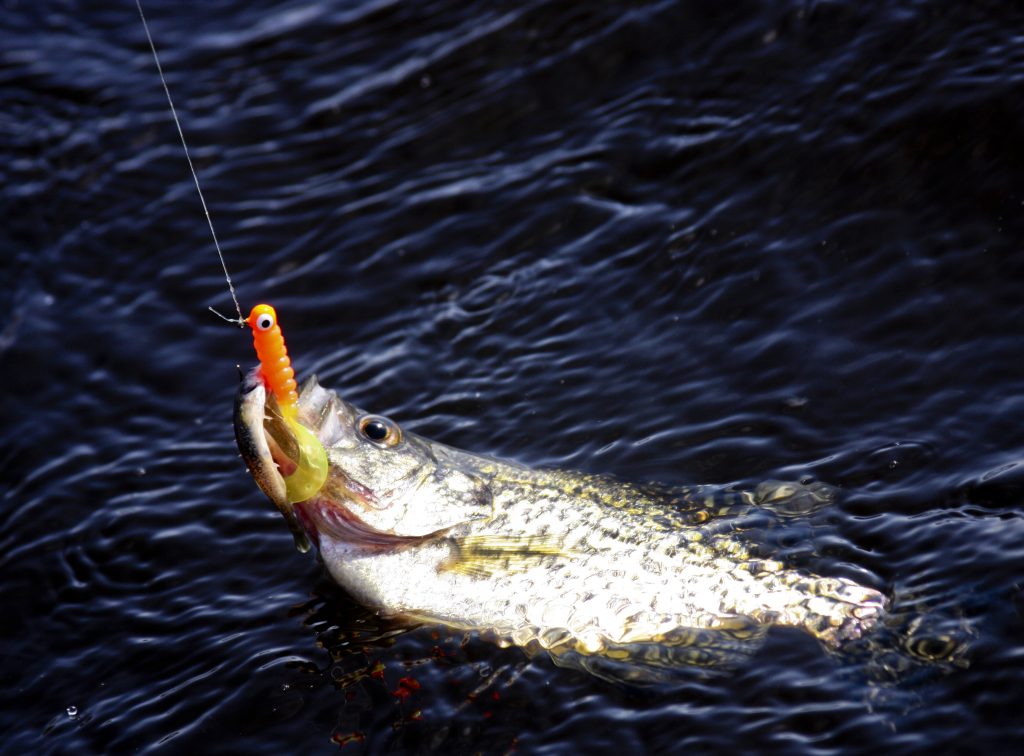
At this point you’ll probably be tempted to jiggle or twitch the lure. Don’t! Instead, hold it steady next to the cover. Your hand is actually trembling and shaking just enough to give the jig a very life-like, quivering motion, something like a minnow rotating its pectoral fins. That’s usually enough to draw thumping strikes from any nearby crappie protecting its nest.
After holding it steady next to the cover for a full minute or more, slowly swim the jig around to the other side of the tree or piling. Pause a few seconds there, then lift the lure up and plunk it down near the next piece of cover. This method lets you probe the very best flooded brush quickly and usually results in a heavy catch by day’s end if the fish are in the shallows. Whether it’s hunger or territorial instinct that makes them strike these jigs is hard to say, but strike them they do — often with gusto!
Keep these four strategies in your arsenal of fishing tactics and you should be well-equipped for the challenge of catching crappies this spring.

